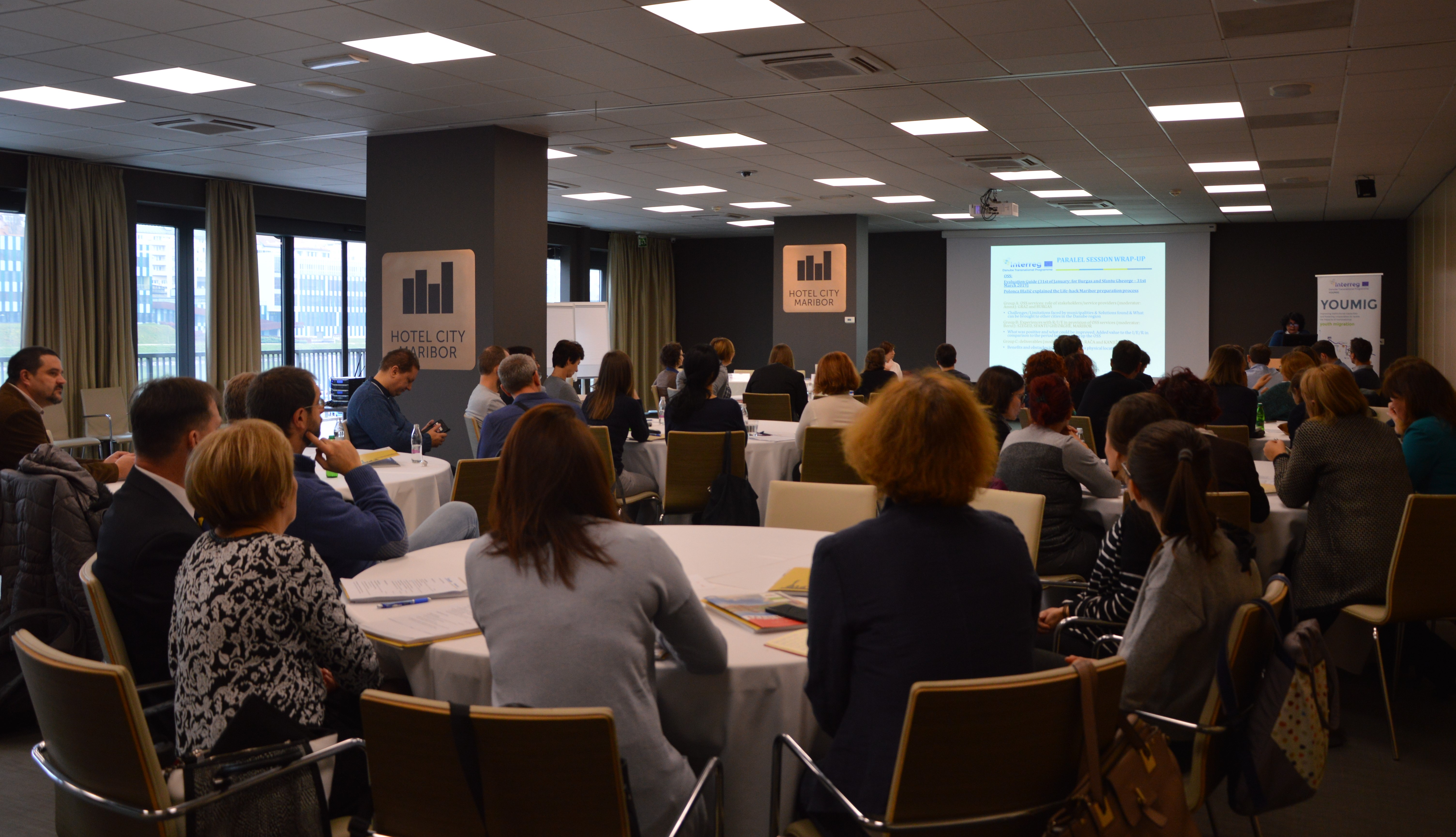YOUMIG - THE GREAT DATA STORY, PART II. – WHAT CAN BE LEARNT
27-03-2019

What are the challenges partners encountered during data collection?
While it may sound like a simple exercise, such a data collection is a tedious and time-consuming task, which also highlights the imperfections of the systems of data collection and exchanges within and across countries. Even if information is collected by a national statistical institute, some of the data subsets might not be open to the public and thus might require an official request, an institutional agreement, or even a payment of a fee in order to receive the information.
Apart from the access requirements, the first challenges arise already at the stage of creation of a unified data collection template. In fact, statistical bodies of the Danube Region might use slightly different definitions for the indicators they are interested in, or define the category of “foreign” by the “country of birth” in one case and “country of citizenship” in another. One of the most intuitive examples is the collection of indicators across groups with different educational levels. In the region, virtually every single country is different in the way their educational system is organised. All these factors make direct comparisons between countries complicated. This is why we also invited extensive comments from partners on the national particularities of each indicator within the YOUMIG dataset.


Some of the indicator values can be biased. For example, the number of returning migrants is likely to be lower than in reality, simply due to the fact that emigrants are known to not deregister from their home country’s municipalities when leaving the country. Another problem is the availability of indicators at sub-national level(s). In case of the participating municipalities, we could partially close this gap with the help of the local small-scale surveys. However, even a survey may pose challenges. The question of reliability and representability of the data should be addressed with care. Further, due to financial limitations, the samples collected often include only a few respondents belonging to some groups of interest, which makes it difficult to break down the data for smaller sub-groups, and sometimes makes the evaluation of the whole indicator itself near impossible.
So what can we learn from the YOUMIG dataset?
As the dataset is rather big, I will highlight only some of the findings. I call an interested reader to explore the YOUMIG dataset for more details and insights. First of all, we can clearly see that even in the aftermath of the refugee crisis, the migration flows between countries of the Danube Region are highly visible. In 2017, the most voluminous flow of migrants to Austria came from Germany, Romania, Hungary and Serbia. Similarly, Romania, Germany and Serbia were in the top-5 national groups of immigrants arriving to Hungary in 2017. A further, somewhat surprising detail is the existence of both East-to-West and West-to-East migration flows, for example a visible flock of Austrian and German citizens to Slovakia.
Students in tertiary education demonstrate differences in their mobility patterns for participation in international/exchange study programs. Students in Bulgaria seem to be the most mobile (about 9% of students in higher education go abroad there), while the figures are lower in Hungary and Romania (6%), and only 2.5% in Slovenia. The reasons behind these differences – perhaps the availability or lack of exchange programs, attitudes towards the exchange programmes, and recognition of foreign qualifications - is an interesting topic in itself, especially in light of EU goals to increase the proportion of higher education students completing study or training abroad.
 Our Austrian partners focused on the international student population living in Graz. Interestingly, a big share (about 50%) of the international students thinks they will probably continue to live in Graz or Austria in general (nearly 90%)in the future.. Another surprising result for the city was that respondents cited a lack of labour market opportunities as one of the main reasons for leaving the city, although in general, opportunities in the city are relatively good. Other reasons cited were mainly personal ones, such as family or partners living outside of Graz. Future desired destination countries were European countries, mainly in northern and western Europe (Scandinavia, UK, Germany), outside Europe the US, Australia and Canada were most mentioned.
Our Austrian partners focused on the international student population living in Graz. Interestingly, a big share (about 50%) of the international students thinks they will probably continue to live in Graz or Austria in general (nearly 90%)in the future.. Another surprising result for the city was that respondents cited a lack of labour market opportunities as one of the main reasons for leaving the city, although in general, opportunities in the city are relatively good. Other reasons cited were mainly personal ones, such as family or partners living outside of Graz. Future desired destination countries were European countries, mainly in northern and western Europe (Scandinavia, UK, Germany), outside Europe the US, Australia and Canada were most mentioned.
Another rarely addressed group is returning migrants, namely those who had lived away from their country of origin for a short (90 days) or longer period before they returned. Although partner municipalities expressed a high interest in learning more about this group in terms of the volume of the flows and their composition, the task of the data collection proved difficult, with multiple gaps in the available data. In Austria, for instance, the total number of returnees (by sex) can be approximated with the help of international inflow data on immigration: it is the number of people who arrive in Austria from a foreign country who were also born in Austria. In Bulgaria, the flows of returnees, put into sub-categories of sex and age, are registered every year. But in Hungary, the numbers of returnees broken down into socio-demographic categories are only available for the years when there is a national census or a microcensus (once in 5 years). In such situations, the small scale surveys can provide a solution.
Similarly, the surveys are often the only possible sources of information on attitudes, opinions, and the subjective well-being of populations at municipality level. Colleagues from Burgas (Bulgaria) reported, as the biggest surprise, that a relatively low number of young people – only 23 out of 198 interviewed – had lived abroad for more than a year. When asked about plans of their potential migration, 120 respondents stated they would prefer to stay in Burgas, and further 30 said they would stay in Bulgaria, but not Burgas. Only 31 young respondents stated that they would move out of the country within the next 12 months, including only 4 who reported to have already taken steps to actually make the move. This finding contradicts the popular perception that a massive exodus of young people from that country is under way.
If we rely heavily on people’s satisfaction with their financial situation as one of the push factors towards migration, we might predict that a higher propensity of Burgas inhabitants would migrate (financial satisfaction stands at 6.1 on a scale of 1 to 10, 10 being the most satisfied) than in Romania’s Sfântu Gheorghe, where financial satisfaction is higher, at 7.17, according to data from the YOUMIG surveys. In fact, it is 22% of respondents in Burgas who would like to move abroad, while in Sfântu Gheorghe this proportion is only 13%. This is a good example of why we should treat and compare the results of the surveys with caution; a variety of methods was used to select the respondents, so comparison is not always automatic, and also we strongly urge the user not to oversimplify causal relationships and remember that every migratory decision is a result of many different factors, some of which are more subjective than others.
These are only a few examples of the findings we embarked upon while exploring the numbers during this project. We hope that the information collected and visualized with the help of the Data Toolkit, to be published with the project’s final results, will help the partner municipalities track a wide range of important indicators and introduce programmes and measures leading to the desired outcomes more wisely and without delay.
